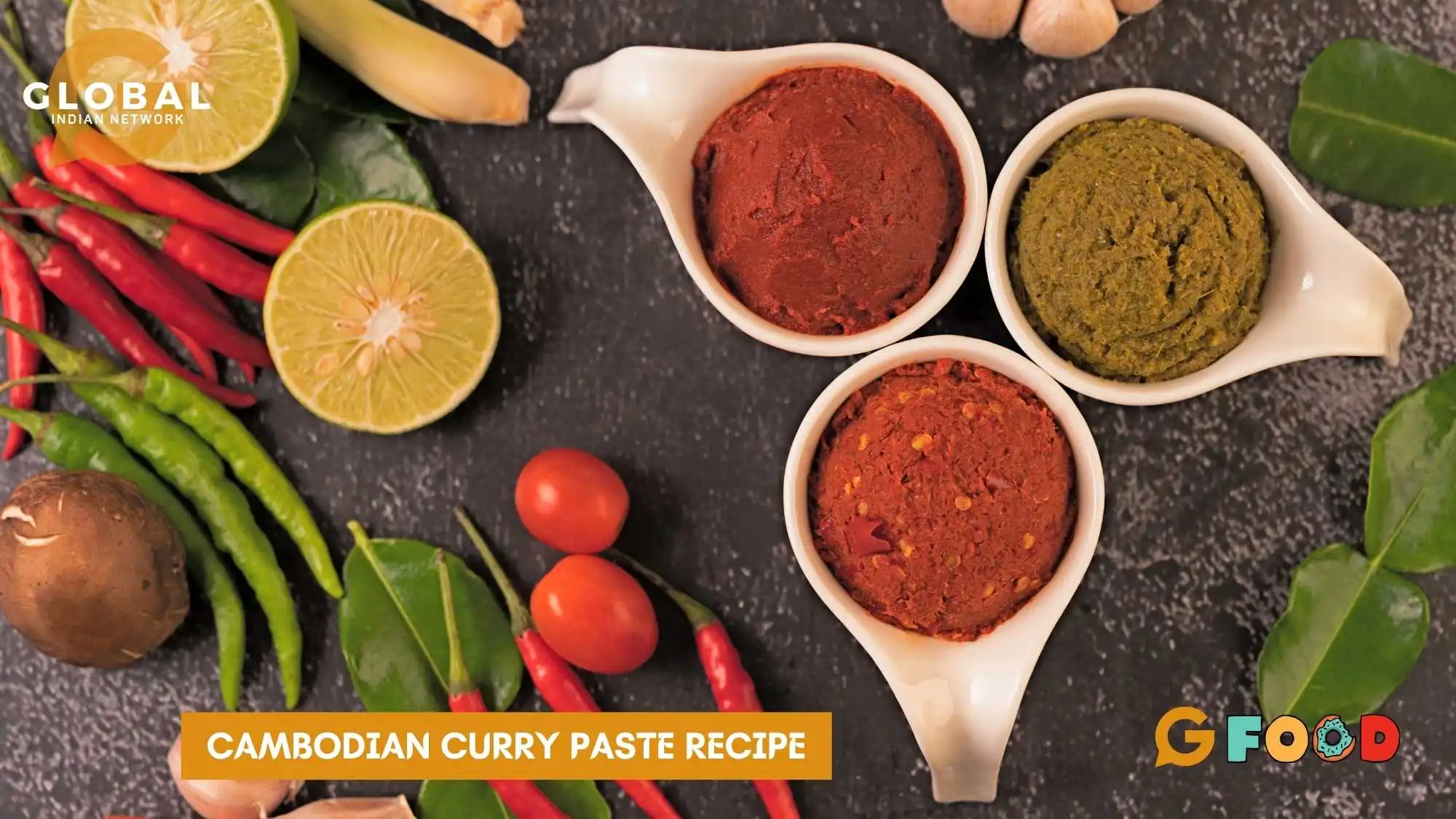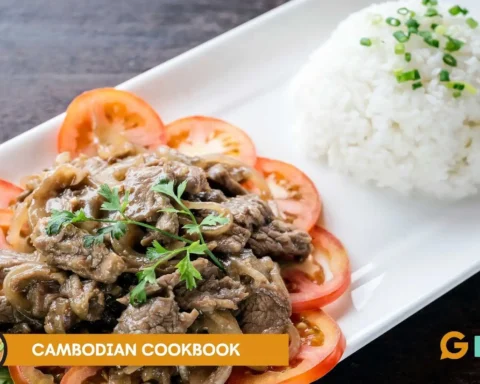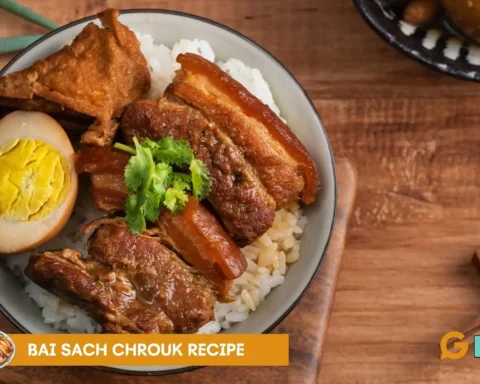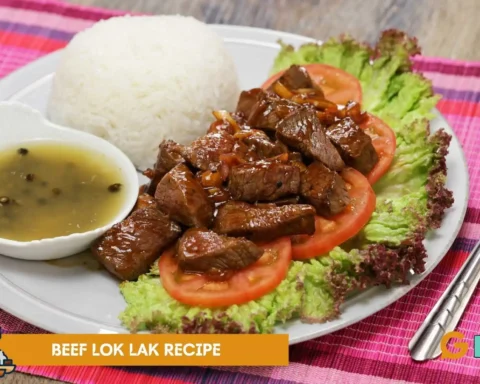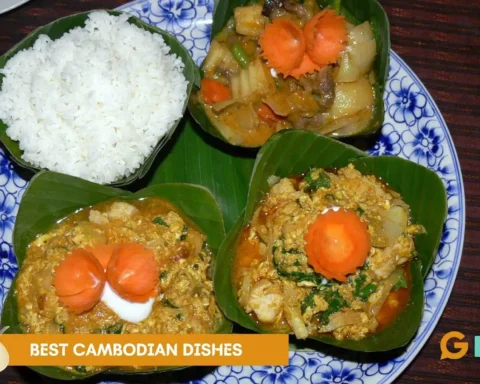Cambodian curry paste lies at the heart of many beloved curry dishes in Cambodian cuisine. This fragrant blend of spices and aromatics transforms simple ingredients into richly flavoured meals. Making your own homemade curry paste ensures freshness and allows you to adjust heat levels to suit your taste. Follow this guide to create an authentic Cambodian curry paste recipe that will elevate everything from Khmer curry soups to creamy coconut milk-based gravies.
Cambodian food offers a unique take on Southeast Asian fare, with its own distinct spice blends and techniques. At the centre of many recipes is Cambodian curry paste, also known as kroeung. Whether you choose a yellow curry paste or a red Khmer curry, the principles are the same: combine fresh turmeric, cloves garlic, lemongrass, kaffir lime leaves and other fragrant ingredients into a smooth paste. Using a food processor or traditional mortar and pestle, you can create a paste that brings depth to both vegetarian and meat-based curry dishes.
Table of Contents
Understanding Cambodian Curry Paste and Key Ingredients
Traditional Cambodian curry paste differs from Thai curries and Indian curry powders. It relies on fresh ingredients rather than dried powders. Fresh turmeric gives an earthy colour, while cloves garlic add pungent warmth. Kaffir lime leaves and lemongrass contribute citrus notes that brighten rich coconut milk. Fish sauce and shrimp paste provide the essential umami backbone. A touch of palm sugar or brown sugar balances the spice, making this paste perfect for sweet potato or green bean curries.
Ingredients in Cambodian cuisine tend to be vibrant and fresh. Sweet potato and green beans work beautifully in vegetarian curries, while white fish or chicken curry benefits from the creamy coconut milk and aromatic ground spices. Whether you make a yellow curry paste or a classic Khmer curry, homemade curry pastes transform simple stir-fries or stews into extraordinary Cambodian dishes.
Equipment Needed
- A reliable food processor or mortar and pestle for a smooth paste form
- Sharp knife and cutting board for chopping fresh ingredients
- Measuring spoons for precise quantities (teaspoon salt, teaspoon shrimp paste, tsp turmeric)
- An airtight jar or container for storing finished paste
Using a food processor will speed up the process, but a mortar and pestle yields a more rustic texture. Both methods produce excellent curry pastes suited for medium heat cooking.

Step-by-Step Cambodian Curry Paste Recipe
- Prepare the aromatics. Trim and slice 2 stalks of lemongrass (outer layer removed) into 2-inch pieces. Peel and roughly chop a thumb-sized piece of fresh turmeric and 4 cloves garlic. Tear 4 kaffir lime leaves into small pieces.
- Combine spice ingredients. Add 1 teaspoon shrimp paste, 1 teaspoon salt, ½ teaspoon turmeric powder (tsp turmeric), and 1 tablespoon fish sauce to the bowl of your food processor.
- Blend to a coarse paste. Pulse the food processor until the mixture starts to clump. Scrape down the sides, then add 1 small piece of galangal root and 2-3 bird’s eye chilies (or to taste) for heat.
- Add fresh vegetables. Include 2-inch chunks of sweet potato and a handful of green beans for body. These vegetables will break down into the paste, enriching its texture.
- Process to a smooth paste. Run the processor on medium heat setting until you have a smooth paste. If it seems too dry, add a splash of coconut milk to help it blend.
- Finish and store. Transfer the finished paste into a jar. Cover with a thin layer of vegetable oil to preserve colour and store in the fridge for up to two weeks.
This basic homemade curry paste can be adapted into yellow curry paste by increasing fresh turmeric, or into a Khmer curry by adding more kaffir lime and galangal. The combination of garlic, fresh turmeric, fish sauce and shrimp paste is the distinctive signature of Cambodian curry pastes.
Cooking with Cambodian Curry Paste
To make a classic Cambodian chicken curry, heat a tablespoon of vegetable oil in a pan over medium heat. Stir in two tablespoons of curry paste and cook for 2–3 minutes until fragrant. Add coconut milk and bring to a simmer. Add chicken pieces, sweet potato chunks and green beans. Cook for 20–25 minutes until the vegetables are tender and the chicken is cooked through. Adjust seasoning with fish sauce, palm sugar or brown sugar to achieve a balance of salty, sweet and spicy.
For fish curries, use white fish or snake beans. Substitute fish for chicken and cook gently to avoid breaking the flesh. Serve over steamed jasmine rice to soak up the creamy coconut milk sauce.
Serving Suggestions
Cambodian curry paste dishes pair beautifully with jasmine rice or rice noodle salads. Garnish with fresh kaffir lime leaves and a drizzle of coconut milk for a creamy element. Serve alongside stir fries or a simple green salad to balance the rich flavours. Leftover curry makes a great soup base; thin it with extra coconut milk or stock and add fresh herbs.

Conclusion
Homemade curry paste unlocks the full potential of Cambodian cuisine. By mastering the versatile Cambodian curry paste recipe, you can create an array of curry dishes from yellow curry to Khmer red chicken curry. Fresh ingredients such as cloves garlic, fresh turmeric, lemongrass and kaffir lime leaves ensure your paste is fragrant and vibrant. Use a food processor for convenience or a mortar and pestle for tradition. With this recipe, rich and flavourful Cambodian curry is always within reach.
Discover the essence of Cambodia, from its rich culinary heritage and vibrant culture to awe-inspiring historical landmarks and emerging business landscapes. Explore our Cambodia destination page and uncover the stories, flavors, and opportunities that await.
FAQs
How long does homemade curry paste last in the fridge?
Stored in an airtight jar with a thin layer of oil on top, curry paste will keep for up to two weeks. For longer storage, freeze in ice-cube trays and thaw as needed.
Can I use store-bought paste instead of homemade curry paste?
While store-bought curry pastes are convenient, they often lack the freshness of homemade curry paste. Making your own ensures control over spice level and ingredients.
Is shrimp paste essential in Cambodian curry paste?
Shrimp paste adds depth and umami, but can be omitted for a vegetarian version. Substitute with miso paste or extra fish sauce for similar savoury notes.
What is the best way to adjust the spice level?
Control heat by varying the number of chilies. For medium heat, use 2–3 bird’s eye chilies. Remove seeds for a milder flavour or add extra chilies for more intensity.
Can I use this curry paste for stir-fries?
Yes. Stir-fry vegetables or protein with a spoonful of curry paste, then add coconut milk or stock to create a quick curry stir-fry.




